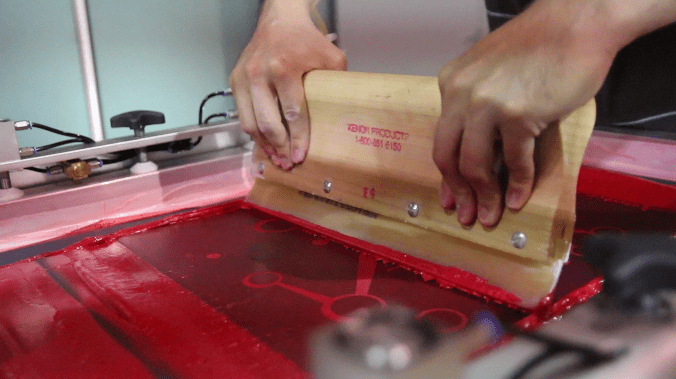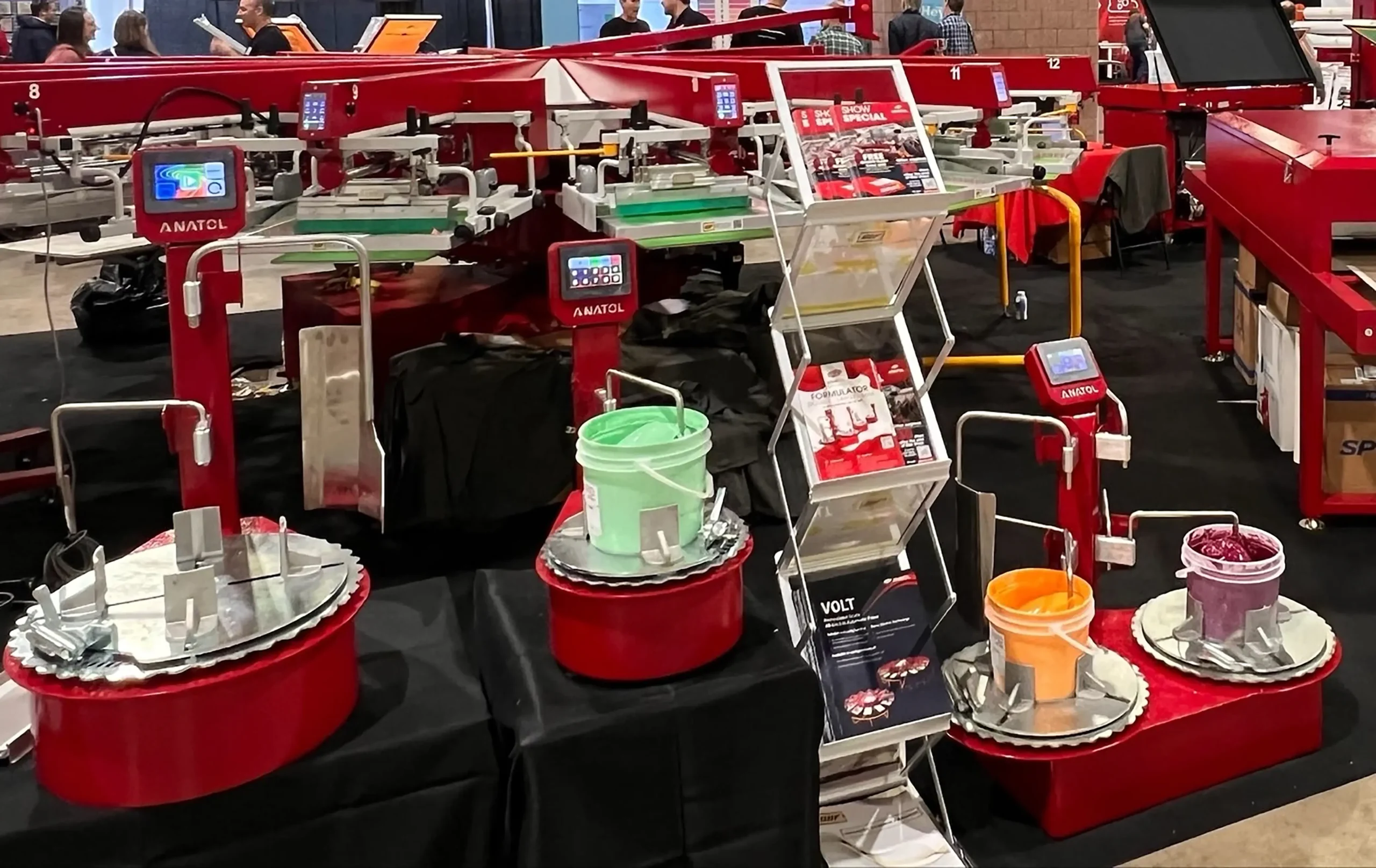

Революция в индустрии трафаретной печати благодаря передовым технологиям и качественному обслуживанию
Anatol Equipment Manufacturing Co.
1429 S Shields Dr
Waukegan, IL 60085


Революция в индустрии трафаретной печати благодаря передовым технологиям и качественному обслуживанию
Anatol Equipment Manufacturing Co.
1429 S Shields Dr
Waukegan, IL 60085

Selecting the right screen printing ink is essential to get bright, long-lasting, and professional results in your projects. At Anatol, we understand that ink selection is as important as selecting the right screen printing press or mesh.
The type of ink you use affects print quality, durability, feel, and eco-friendliness. This guide covers the best inks for screen printing on cotton, polyester, and specialty fabrics.
It also provides tips to help you improve your printing process.
The right screen printing ink ensures your designs stand out while meeting your clients’ needs. Ink choice affects several factors:
Understanding the types of screen printing inks available helps you achieve professional results with every job.
Below is an overview of the top screen printing inks and their recommended applications. All are compatible with Anatol’s screen printing equipment.
Best for: Cotton, cotton-poly blends, dark fabrics
Plastisol ink is the go-to choice for many screen printers because it is flexible and easy to use. This ink contains PVC particles in a plasticizing emulsion. Durable and perfect for long print runs on automatic screen printing presses.
Pros:
Cons:
Best for: 100% cotton, organic fabrics, soft prints
Water-based ink penetrates fabrics for a soft, breathable finish, making it a favorite for eco-friendly screen printing. Perfect for high-fashion prints, this ink pairs well with Anatol’s precision equipment.
Pros:
Cons:
Best for: Dark 100% cotton fabrics
Discharge ink is a water-based ink that removes dye from dark fabrics and replaces it with bright pigments. This creates soft prints without thick layers.
Pros:
Cons:
Best for: Polyester, athletic wear, stretchy fabrics
Silicone ink works best for high-performance sportswear. It provides stretch and durability, especially on polyester garments printed with Anatol’s advanced presses.
Pros:
Cons:
Best for: Unique, high-end, specialty garments
Specialty inks like glow-in-the-dark, metallic, and puff inks add creativity to your designs and help make your brand stand out.
Pros:
Cons:

Green practices are a growing priority in the printing industry. Here are the top eco-friendly screen printing inks to reduce your environmental footprint:
Water-based inks do not contain PVC or phthalates, making them an eco-friendly choice that reduces environmental impact. They work well with Anatol’s green printing solutions.
These inks maintain plastisol’s durability without harmful phthalates, offering a greener alternative for traditional screen printing.
Using natural binders like soy or algae, these eco-friendly inks reduce the carbon footprint of your printing process.
Newer discharge inks use non-toxic activators, delivering soft prints without harmful chemicals like formaldehyde.
Selecting the right screen printing ink depends on several factors:

Pairing the right ink with Anatol’s screen printing equipment ensures optimal results.
Choosing the best inks for screen printing is essential for high-quality, durable, and sustainable prints. The right ink, paired with Anatol’s advanced equipment, helps you produce vibrant designs that meet customer expectations. Explore eco-friendly screen printing options to align with modern green practices while maintaining top-tier results.
Elevate your screen printing with expert ink selection and advanced equipment. Visit Anatol’s blog for more expert tips or explore our screen printing solutions to streamline your workflow.
Your message was successfully sent!